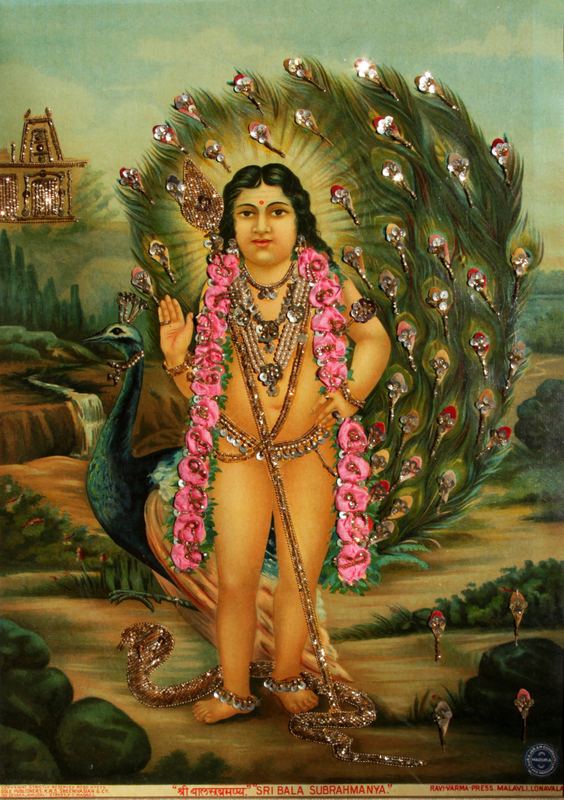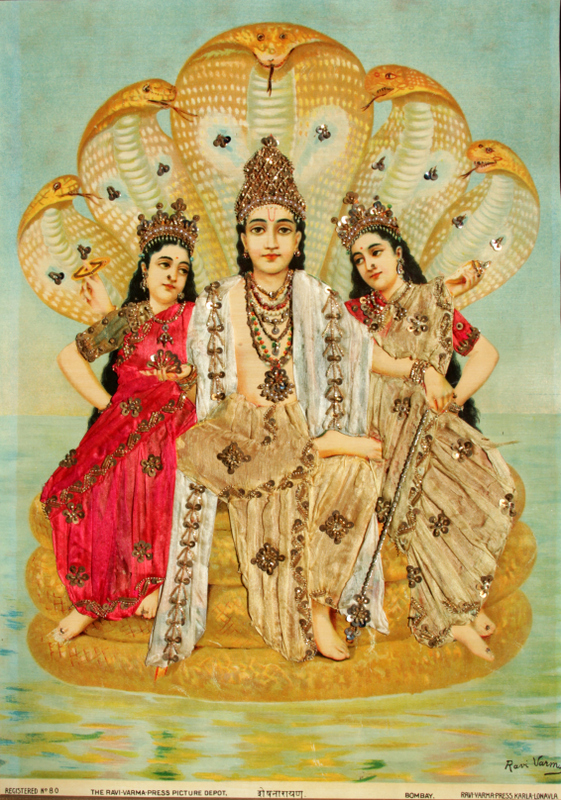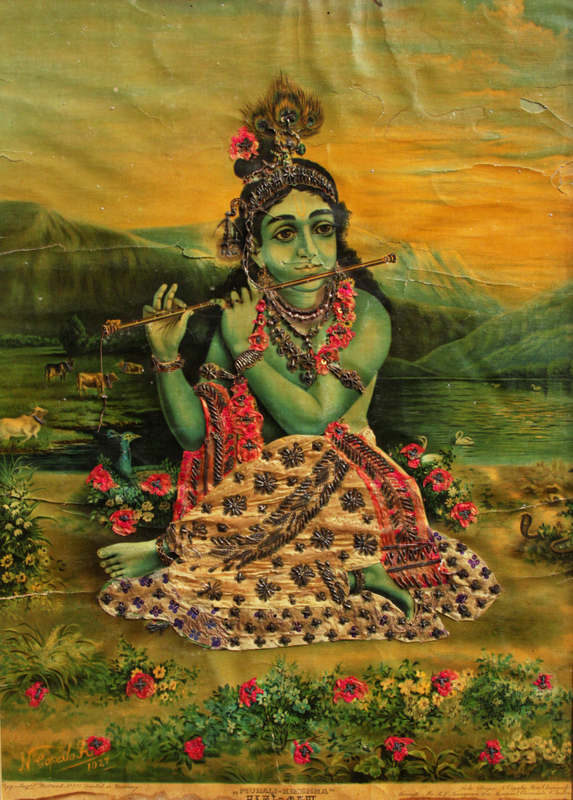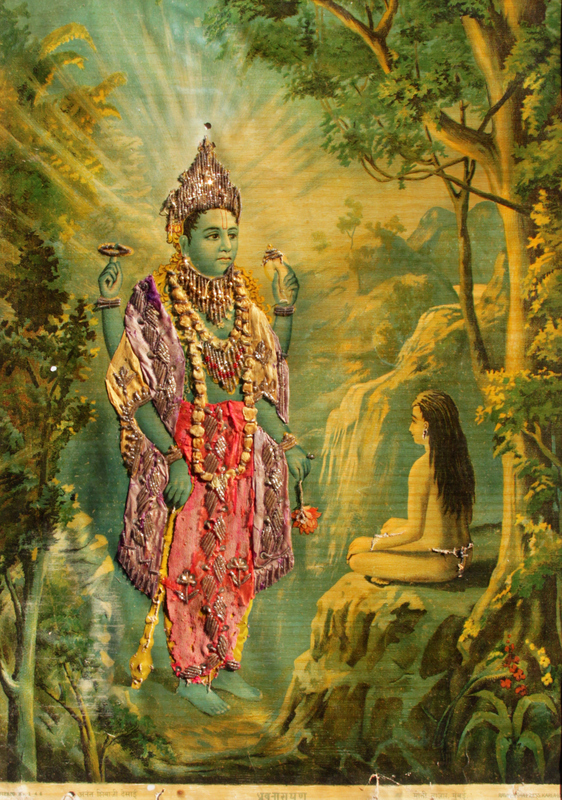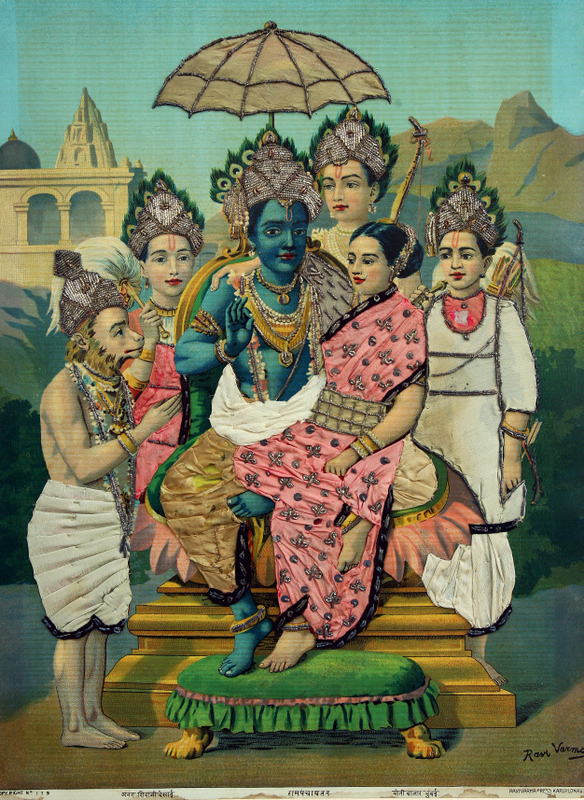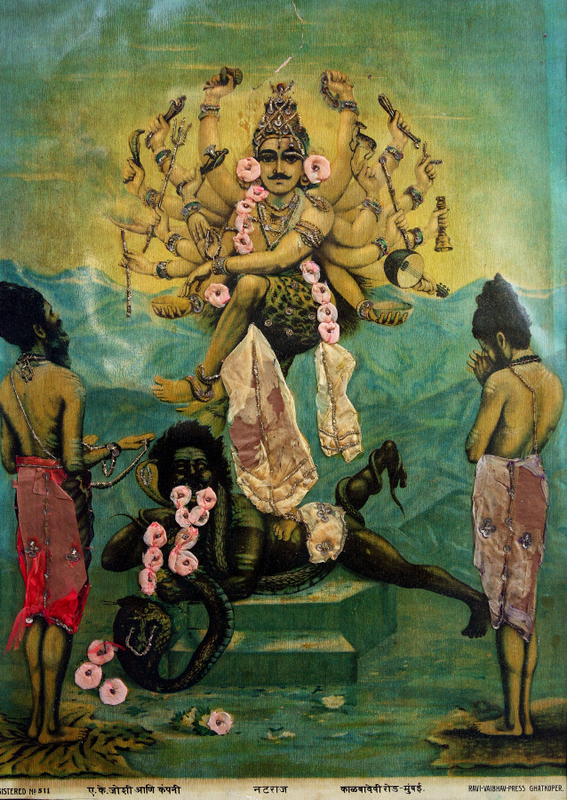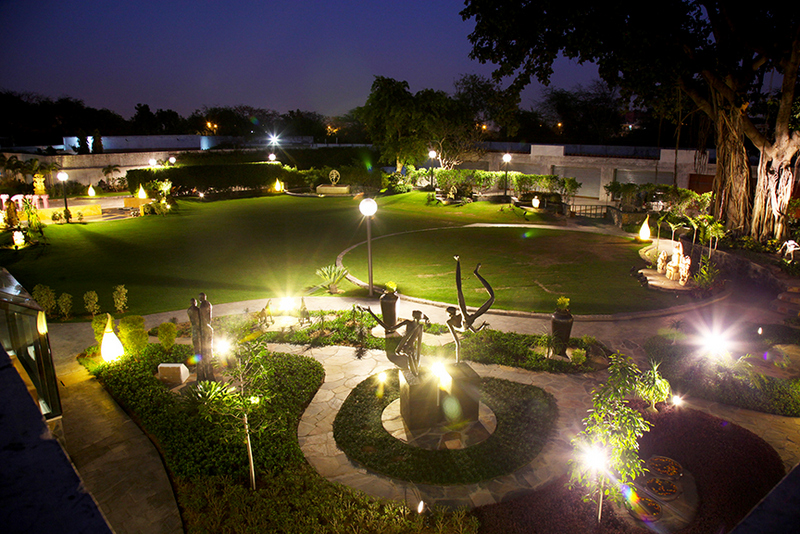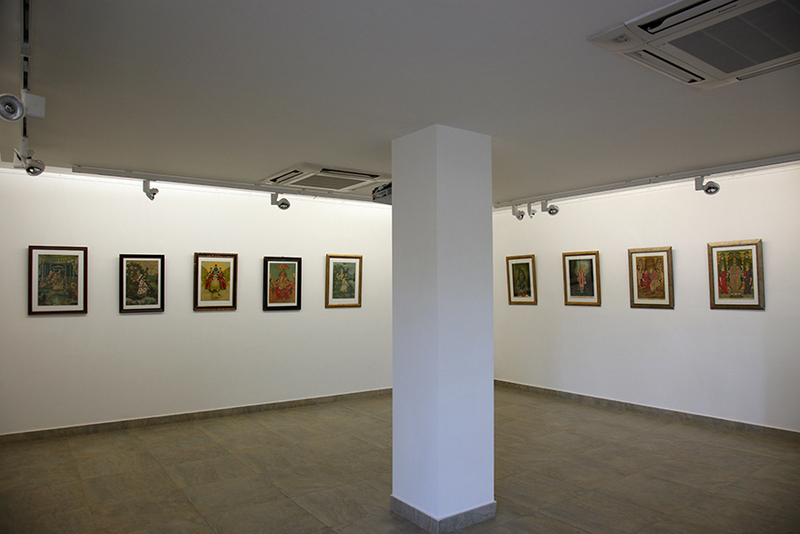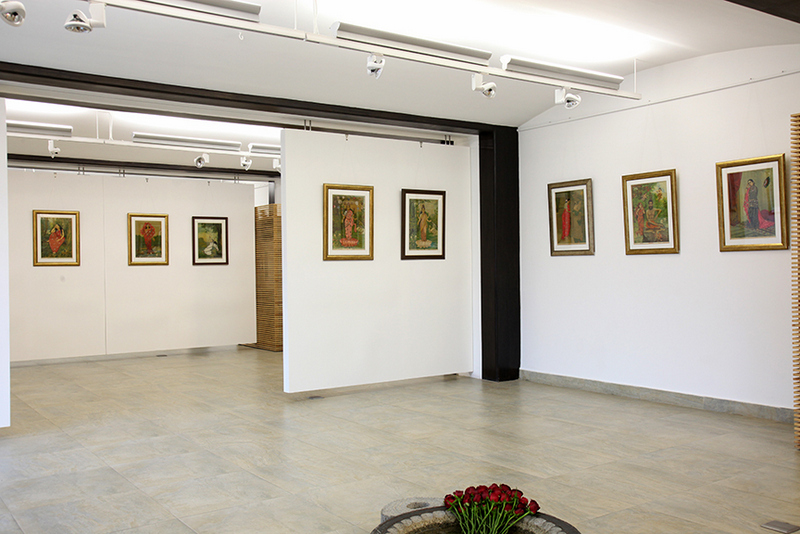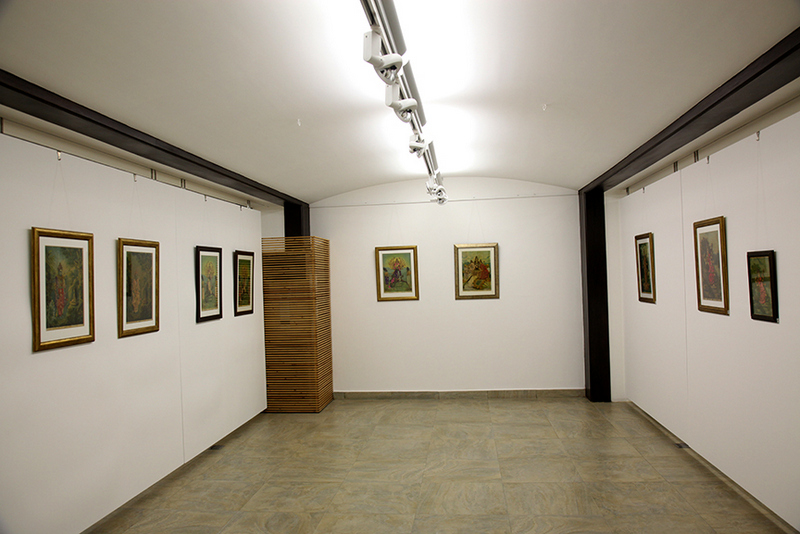The Divine Deities by Raja Ravi Varma: Oleographs circa Early 1900s
Indian art is not complete without acknowledging Raja Ravi Varma’s contribution. The oleographs presented in the exhibition are all with zari or vastram work. This exhibition gives a chance to art aficionados to see some rare oleographs and a unique opportunity for art collectors to acquire some rare oleographs by the Raja Ravi Varma Presses.
Raja Ravi Varma (1848-1906) born as Ravi varma koil Thampuran hailed from an aristocratic family of Kilimanoor in Travancore, Kerala. He was essentially a self-taught artist and at the age of thirteen he joined the Court of Trivandrum, where he observed and learnt the use of oil paints.
Adventurous by nature, Raja Ravi Varma and his brother travelled extensively in India and observed diverse cultures, costumes and jewellery, which is visible in the diverse artworks that he went on to create later.
In 1888, Sayajirao, Gaekwad of Baraoda commissioned fourteen paintings based on Hindu epics Ramayan and Mahabaratha. This resulted in the creation of paintings of Radha and Madhava, Arjun and Subhadra, Vishwamitra Menaka, Shanthanu and Ganga, Keechaka Sairandhri; the first portrayal of Hindu gods and goddesses in oil colors on canvas. Little did he know that he was going to be instrumental in starting a cultural revolution and was going to change how Hindus visualized and perceived their deities.









